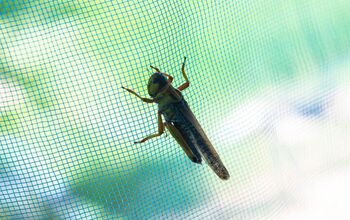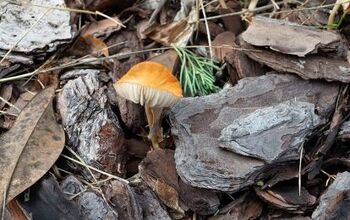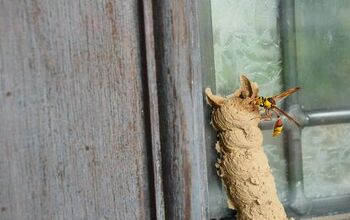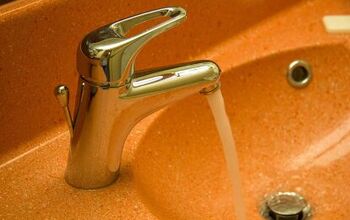How To Get Rid Of Virginia Creeper (Step By Step Guide)

If you’ve spent a lot of time cultivating a beautiful garden, you don’t want pesky invaders taking over your space. Invasive species like the Virginia creeper steal resources from other plants in the area. This can easily lead to a dead garden.
There are several ways to get rid of Virginia creeper. For natural solutions, you can use mulch, vinegar, rock salt, or boiling water. You can also prune the creepers, meaning you remove the roots, so they do not reproduce. For larger growths, you may need to use an intense chemical such as Roundup to remove it.
This article contains dozens of way to get rid of Virginia Creeper and prevent it from growing back.Read on to find the best method for you to try. If that doesn’t work, don’t be discouraged! You can always try each method in this guide until you find one that works for you. Let’s get started!
Do You Need Landscaping Services?
Get free, zero-commitment quotes from pro contractors near you.

How To Remove Virginia Creeper Naturally
If Virginia creeper is running wild in your garden, you can take steps to remove it without using chemicals. You can remove Virginia creeper by pruning it back or using mulch, vinegar, rock salt, or boiling water.
Pruning
To prune back Virginia creeper, you will need the following materials:
- A long-sleeved shirt
- Safety goggles
- Gloves
- Pruners
Step 1: Protect Yourself
Before you attempt to remove the Virginia creeper, protect yourself! Make sure to wear a long-sleeved shirt, safety goggles, and gloves. This will protect your arms and hands as you remove the plant.
Step 2: Start Pruning
Using the pruners, cut the central trunk of the Virginia creeper as close to the ground as possible. Sometimes it helps to cut the grass around the roots of this weed so that you can get the sheers nearly flush to the ground. This will help to cut the plant closest to the ground.
Step 3: Remove The Creeper
Remove the Virginia creeper from its host plants and structures. Be careful as you remove the Virginia creeper vines from the surrounding areas. If the vines are wrapped tightly, they can easily damage surfaces.
Step 4: Maintain
Watch for new growth and cut it away as it returns. It is likely that Virginia creeper will grow back over time, but continued clipping can limit this.
Remove Virginia Creeper With Mulch
Mulch is another option to remove Virginia creeper naturally. Virginia creeper needs everything a regular plant needs to grow: sunlight, water, and air. If you cover Virginia creeper with mulch, it will cut the vine off from its resources!
- Cover the creeper with mulch. Completely cover the Virginia creeper with mulch made from biodegradable materials. This will essentially kill the weed so that you can easily remove it or let it decompose.
- Check the area. After a few weeks, check to see if the vines have died. If the Virginia creeper has died, both it and the mulch will decompose into the soil.
Using Vinegar To Remove Virginia Creeper
Vinegar is a natural acid that can get rid of stubborn Virginia creeper vines. To use vinegar to remove Virginia creeper, you will need the following tools:
- White Vinegar
- Spray Bottle
- Water
- Newspaper or Garbage Bag
- Dilute the vinegar. Mix 20% white vinegar with 80% water.
- Load into the bottle. Pour the vinegar and water mixture into a sprayer.
- Lay out the vines. Remove Virginia creeper vines from nearby host plants and structures. If possible, lay the vines out flat on the ground.
- Spray the creeper. Spray the Virginia creeper with the vinegar and water mixture and allow it to sit for three days. Be careful not to spray nearby plants. You might want to cover nearby foliage if it is very close to the Virginia creeper. You can use a piece of newspaper or garbage bags to protect other plants.
- Repeat. After 72 hours have passed, dispose of dead vines. If there are living vines, re-spray, and repeat the process.
Removing Creeper With Rock Salt
Rock salt is another natural alternative to removing Virginia creeper. This should only be utilized if there are not many nearby plants. Rock salt will also prevent the growth of new plants in the area for a period of time.
- Dissolve the rock salt. Mix one cup of rock salt with one gallon of hot water and allow the rock salt to dissolve.
- Apply the mixture. Pour the rock salt and water mixture around the base of the Virginia creeper.
- Repeat. Wait several days and then remove the dead vines. Repeat the process if any Virginia creeper remains alive.
Boiling Water Can Kill Virginia Creeper
Boiling water can be utilized to kill Virginia creeper naturally. Follow these steps to get rid of Virginia creeper using boiling water.
- Cut the plant. Cut the Virginia creeper down to its base as you would when pruning it.
- Apply the water. Pour boiling water at the base of the Virginia creeper.
- Repeat. Repeat the process over the course of several days to kill the root system.
How To Kill Virginia Creeper Using Chemicals
If you tried to remove Virginia creeper naturally and it keeps coming back, it may be time to try herbicides.
To completely kill Virginia creeper, you’ll need the following tools:
- Pruners
- Safety glasses
- A long-sleeved shirt
- Chemical-resistant gloves
- A garbage bag
- A paintbrush
- An herbicide containing glyphosate (like Roundup)
- A tarp
Step 1: Put On Protective Gear
Safety first! Make sure to wear a long-sleeved shirt, gloves, and glasses to protect yourself from chemicals. These items will also protect you from getting scratched up by Virginia creeper vines.
Step 2: Remove The Vines
Remove the Virginia creeper from nearby host plants and structures. Be careful not to damage other plants as you remove the vines.
Step 3: Lay Out The Vines
Stretch the length of the vine out along the ground. Do not remove it from the soil yet. Don’t pull too hard as you’re doing this or you run the risk of breaking the vine and making it harder to pull out.
To protect your grass from being damaged by herbicides, lay a tarp beneath the Virginia creeper vine. This will prevent the herbicide from being sprayed on your grass and other plants.
Step 4: Apply The Herbicide
Spray the vine with herbicide. Follow any product instructions to ensure you dilute the herbicide as directed.
Please be sure to protect your skin and face when you’re applying these sa some of them may be toxic or harmful for human consumption.
Step 5: Paint The Stem
Dip a paintbrush in the herbicide and paint on the cut Virginia creeper stem. Be careful not to drip the herbicide on surrounding plants.
Step 6: Let It Sit
Allow 48 hours for the herbicide to sit on the vine undisturbed. Spray the vine when the weather is going to be clear as the rain can interfere with the process.
Step 7: Dispose Of The Vines And Maintain The Area
After 48 hours, remove the Virginia creeper at the soil level with the pruners. Place the vines into the trash bag and dispose of them.
Regularly check the cut stem for new growth. Prune back the stem and paint with herbicide as needed to stop new growth.
It’s a good idea to check the stem at least every month or so as this grows rather quickly. Checking frequently will help you prevent the issue in the first place.
How Do You Identify Virginia Creeper?
Virginia creeper is a five-leaved ivy plant that is sometimes mistaken for poison ivy. Never fear, there’s an easy way to tell these two plants apart. Poison ivy only has three leaves, so if your garden invader has five leaves, it’s likely Virginia creeper.
Virginia creepers have woody vines and develop blue-colored berries and red leaves in the fall. They climb on or along nearby plants, taking sunlight and nutrients from them as they go.
Related Questions
Is it safe to remove Virginia creeper? Is it poisonous to humans?
While the leaves will not produce a rash like poison ivy, Virginia creeper’s berries are highly toxic. Its sap may also cause skin irritation in some people and animals. You can prevent reactions when removing Virginia creeper by wearing gloves, goggles, and a long-sleeved shirt.
Can you get rid of Virginia creeper with a lawnmower?
You can get rid of Virginia creeper with a lawnmower. You should use a gas-powered mower to really cut and kill the vines as you mow. Electric and rotary mowers will most likely just run over Virginia creeper without killing it.
When is the best time to get rid of Virginia creeper?
It is best to try to remove Virginia creeper in mid-to-late summer, especially if you are using an herbicide. For herbicide to be most effective on Virginia creeper, it should have significant growth and leaf area. This growth often occurs during the later summer months.
Do You Need Landscaping Services?
Get free, zero-commitment quotes from pro contractors near you.

Wrapping Up
Virginia creeper, if not watched closely, can overtake an entire garden. It can kill surrounding plants by taking away necessary sunlight and nutrients. You can remove Virginia creeper naturally by pruning it back or utilizing mulch, vinegar, rock salt, or boiling water.
If natural remedies don’t seem to be working, you can use a glyphosate herbicide to kill Virginia creeper. Always use safety goggles and gloves when using herbicides to protect yourself from chemicals.
Related Guides

Stacy Randall is a wife, mother, and freelance writer from NOLA that has always had a love for DIY projects, home organization, and making spaces beautiful. Together with her husband, she has been spending the last several years lovingly renovating her grandparent's former home, making it their own and learning a lot about life along the way.
More by Stacy Randall



























